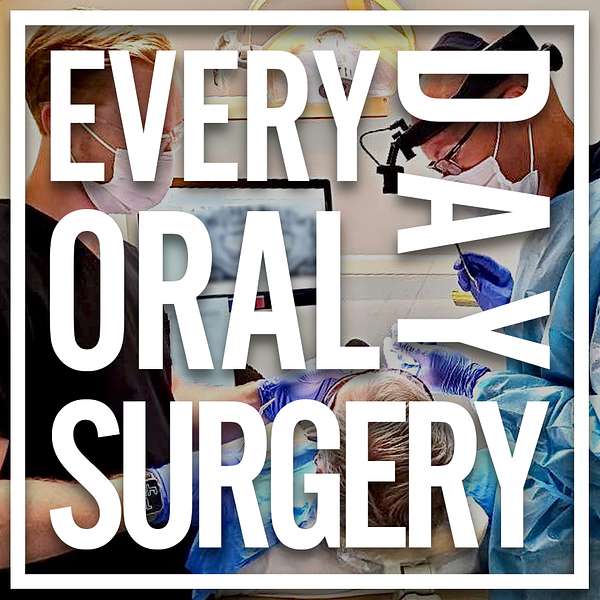
Everyday Oral Surgery
Everyday Oral Surgery
Dr. Robert Marx: Nuances of dealing with the OKC (Odontogenic Keratocyst)
Due to a gene abnormality, the World Health Organization labeled the odontogenic keratocyst as a tumor, but that is not the case. Today we are joined by an expert on the subject, Dr. Robert Marx, to discuss the nuances of diagnosing and treating odontogenic keratocysts. Dr. Marx is the Chief of oral maxillofacial surgery at the University of Miami Miller School of Medicine and has a wealth of experience dealing with this particular condition. He explains that they are not tumors but in fact cysts. Tuning in, you’ll hear about what symptoms patients with odontogenic keratocysts experience, how to diagnose them, and what radiographic features distinguish them from other types of cysts. Dr. Marx discusses the difference between decompression and marsupialization, how to save the unerupted teeth associated with these cysts, and he talks about his experiences with BMP. Find out when to biopsy and nucleate at the same time, when you should try to shrink a large lesion down prior to nucleation, and how to identify signs of basal cell nevus syndrome in a patient with more than one keratocyst. For some clarification on this somewhat confusing subject, tune in today.
Key Points From This Episode:
- An introduction to Dr. Robert Marx and his career as an oral maxillofacial surgeon.
- Why Dr. Marx believes that odontogenic keratocysts are cysts and not tumors and why there is confusion about this.
- What types of patients are high-risk for odontogenic keratocysts.
- The radiographic features that distinguish them from other types of cysts.
- The symptoms of odontogenic keratocysts and how to diagnose them.
- How best to treat odontogenic keratocysts to reduce the risk of recurrence.
- The difference between decompression and marsupialization.
- How to deal with unerupted teeth associated with odontogenic keratocysts.
- Dr. Marx’s experiences with BMP.
- When to biopsy and nucleate at the same time.
- When to try to shrink a big lesion down with a decompression tube prior to nucleation.
- Signs of basal cell nevus syndrome to look for in a patient with more than one keratocyst.
- Why you shouldn’t worry about recurrences: they are usually new primaries.
- Why you should do a follow-up on a yearly basis and what you should look for.
- Hear about Dr. Marx’s favorite quote and how cleaning fish helps him with his oral surgery skills in the four rapid-fire questions.
- Dr. Marx talks about the novels and the non-fiction books he’s written.
- Closing thoughts by Dr. Marx on the importance of oral maxillofacial surgery as a profession.
Links Mentioned in Today’s Episode:
Dr. Robert Marx on LinkedIn — https://www.linkedin.com/in/robert-e-marx/
Miller School of Medicine — https://med.miami.edu/
Killing Crazy Horse — https://www.amazon.com/Killing-Crazy-Horse-Merciless-OReillys/dp/1627797041
Books by Dr. Robert Marx — https://www.amazon.com/Robert-E-Marx/e/B004LUVCSY?ref=sr_ntt_srch_lnk_6&qid=1624351335&sr=1-6
Dr. Grant Stucki Email — grantstucki@gmail.com
Dr. Grant Stucki Phone — 720 441 6059